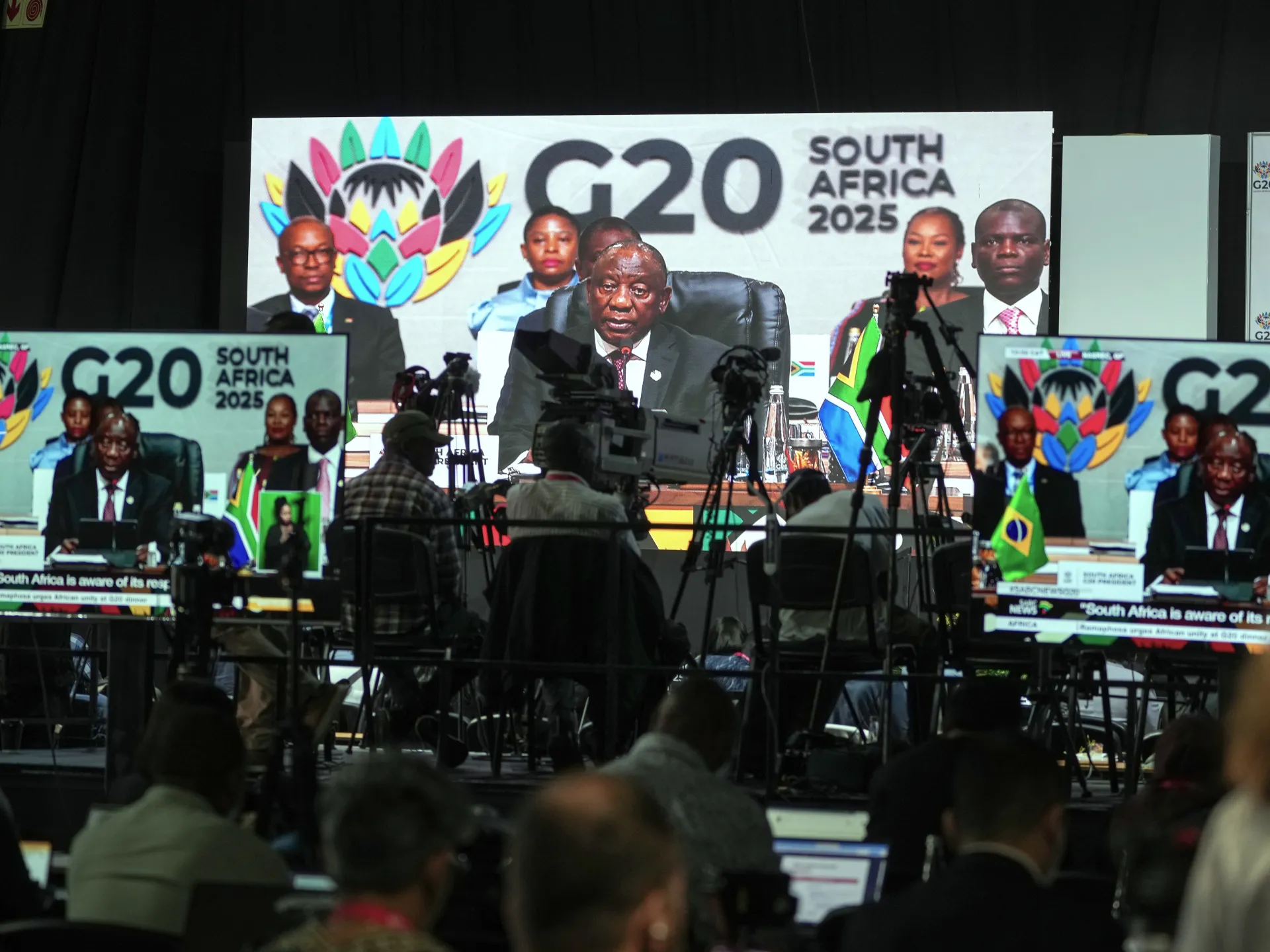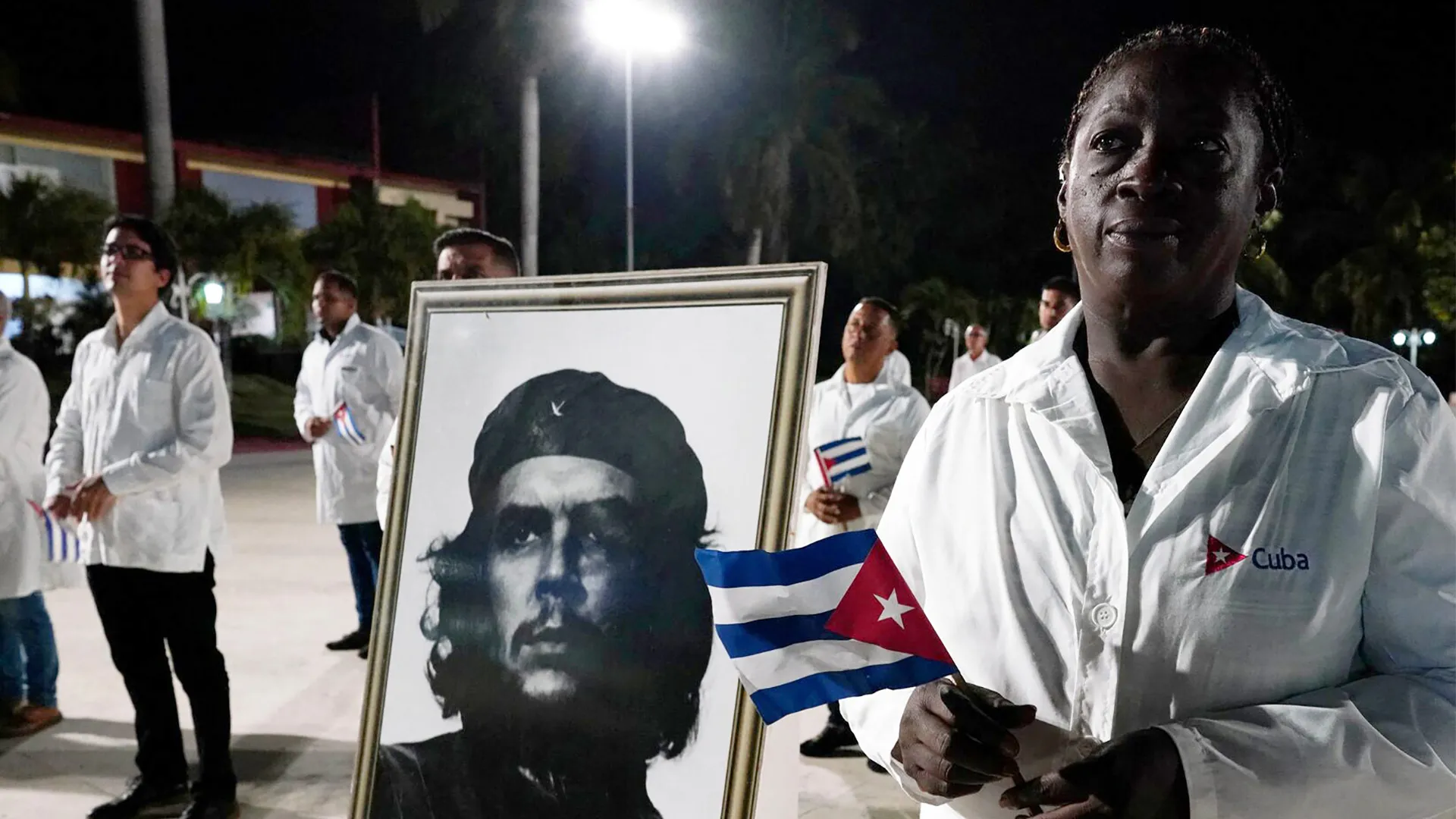G20 fails to deliver on sovereign debt distress | Debt News
Heads of state from the world’s most powerful countries gathered in Johannesburg, South Africa, over the weekend for a summit that had been billed, under South Africa’s G20 presidency, as a turning point for addressing debt distress across the Global South.
South African President Cyril Ramaphosa had consistently framed the issue as central to his agenda, arguing that spiralling repayment costs have left governments, particularly in Africa, with little room to fund essential services like healthcare and education.
Recommended Stories
list of 4 itemsend of list
But despite repeated pledges – including in the leaders’ summit declaration to “strengthen the implementation of the G20 Common Framework” – South Africa did not deliver any new proposals for easing fiscal constraints in indebted nations.
Hopes that world leaders would use the G20 summit to tackle sovereign debt distress were further dashed when United States President Donald Trump, at odds with South Africa over domestic policies, skipped the meeting altogether amid Washington’s retreat from multilateralism.
The summit also marked the close of a brief period of Global South leadership in the G20, following presidencies held by Indonesia in 2022, India in 2023, and Brazil in 2024. The US is set to assume the G20 presidency on December 1.
Debt ‘vulnerabilities’
The G20 – which consists of 19 advanced and emerging economies, the European Union and the African Union – represents 85 percent of global gross domestic product (GDP) and roughly two-thirds of the world’s population.
In October, G20 finance ministers and central bank chiefs met in Washington and agreed to a consensus statement on debt.
“We recognise that a high level of debt is one of the obstacles to inclusive growth in many developing economies, which limits their ability to invest in infrastructure, disaster resilience, healthcare, education and other development needs,” the statement said.
It also pledged to “reaffirm our commitment to support efforts by low- and middle-income countries to address debt vulnerabilities in an effective, comprehensive and systematic manner”.
The communique committed to improving the much-criticised Common Framework, a mechanism launched by the G20 five years ago to accelerate and simplify debt restructuring – when countries have to reprofile debts they can no longer afford to repay.
Elsewhere, the statement advocated for greater transparency around debt reporting and more lending from regional development banks.
Record-high debt levels
According to the Institute of International Finance, a banking industry association, total debt in developing countries rose to a record high of $109 trillion by mid-2025.
In recent years, COVID-19, climate shocks and rising food prices have forced many poor countries to rely on debt to stabilise their economies, crowding out other investments. For instance, the United Nations recently calculated that more than 40 percent of African governments spend more on servicing debt than they do on healthcare.
Africa also faces high borrowing costs. In 2023, bond yields – the interest on government debt – averaged 6.8 percent in Latin America and the Caribbean, and 9.8 percent in Africa.
Meanwhile, Africa collectively needs $143bn every year in climate finance to meet its Paris Agreement goals. In 2022, it received approximately $44bn.
At the same time, countries on the continent spent almost $90bn servicing external debt in 2024.
No progress
Shortly before the release of the G20’s final communique, 165 charities condemned the group’s slow progress on debt sustainability and urged President Ramaphosa to implement reforms before transferring the G20 presidency over to the US in December.
“While this year’s G20 has been put forward as an ‘African G20’, there is no evidence that any progress has been made on the debt crisis facing Africa and many other countries worldwide during the South African presidency,” the group said in a letter.
The missive called on the International Monetary Fund (IMF) to sell its gold reserves and set up a debt relief fund for distressed governments. It also backed the creation of a ‘borrowers club’ to facilitate cooperation among low-income countries.
The call for a unified debtor body reflects growing frustration with existing frameworks, notably the Paris Club, in which mostly Western governments, but not China, have exerted undue influence over the repayment policies of debtor nations.
In May 2020, the G20 launched a multibillion-dollar repayment pause to help poor countries cope with the COVID‑19 crisis. Known as the Debt Service Suspension Initiative, the programme is continuing to provide relief to some participating countries.
The launch of the Common Framework, soon afterwards, was designed to coordinate debt relief among all creditors. At the time, the initiative was hailed as a breakthrough, bringing together the Paris Club, China and private creditors to help prevent a full-blown debt crisis in developing countries.
But coordinating equal treatment, including government lenders, commercial banks, and bondholders, has made the process slow and prone to setbacks.
To date, none of the countries that joined the Common Framework – Ethiopia, Zambia, Ghana, and Chad – have completed their debt restructuring deals.
And even then, the programme has relieved just 7 percent of the debt costs for the four participating nations, according to ONE Campaign, an advocacy group.
‘Outmanoeuvred’
In March, South Africa convened an expert panel – headed by a former finance minister and a former Kenyan central banker – to explore how to assist heavily indebted low-income countries, particularly in Africa.
In a report released earlier this month, the panel echoed many of the ideas put forward by the 165 charities that wrote to Ramaphosa in October, calling for measures like an IMF-backed special debt fund and the formation of a debtors’ club.
But the experts’ proposals “weren’t even acknowledged at the leaders’ summit”, Kevin Gallagher, director of Boston University’s Global Development Policy Center, told Al Jazeera. He said that the G20 presidency “failed to address the scale of the global debt problem”.
“Ultimately,” Gallagher added, “South Africa was outmanoeuvred by larger, more economically important members of the G20 who saw little benefit to themselves in reforming the international financial architecture on debt.”
‘Double whammy’ of debt
In the early 2000s, the IMF, World Bank and some Paris Club creditors cancelled more than $75bn of debt – roughly 40 percent of external obligations – under the Heavily Indebted Poor Countries Initiative.
Since then, however, many developing countries have slipped back into the red. After the 2008 financial crisis, private creditors poured money into low-income economies, steadily replacing the cheaper loans once offered by institutions like the World Bank.
Between 2020 and 2025, almost 40 percent of external public debt repayments from lower-income countries went to commercial lenders. Just one-third went to multilateral institutions, according to Debt Justice, a United Kingdom-based charity.
China has also emerged as the world’s largest single creditor, especially in the Global South, committing more than $472bn through its policy banks – such as the China Development Bank and the Export-Import Bank – between 2008 and 2024.
“On top of debt becoming more expensive over the past 10 or 15 years, there is now a wider universe of lenders that developing countries have turned to,” says Iolanda Fresnillo, a policy and advocacy manager at Eurodad, a civil society organisation.
“It’s been a double whammy. Debt is now costlier and harder to resolve,” she said, noting the difficulty of coordinating creditors in a restructuring. Protracted debt crises slow growth by squeezing public investment.
Overcoming these hurdles is made harder when creditors pursue competing commercial interests. Fresnillo says an independent debt-restructuring body, designed to shorten negotiation times and limit economic costs, could help.
In September, the head of the UN Conference on Trade and Development (UNCTAD), Rebeca Grynspan, said, “There is no permanent institution or system that is there all the time dealing with debt restructuring … maybe we can create new momentum.”
However, talk of an international sovereign debt restructuring mechanism isn’t new. The IMF spearheaded a push for a neutral body – which would be akin to a US bankruptcy court – in the late 1990s.
The Fund’s proposed restructuring mechanism faced swift pushback. Major creditor countries, particularly the US, opposed ceding power to an international body that could override its legal system and weaken protections for US investors.
Still, “the need for this type of international solution is obvious”, says Fresnillo. “Having a basic set of rules, as opposed to an ad hoc negotiation for every new debt crisis, should be a bare minimum.”
She added that “adopting a global standard on taxing transnational corporations could also guarantee a baseline of revenues for low-income countries. But with multilateral cooperation so weak right now, I wouldn’t hold my breath.”



